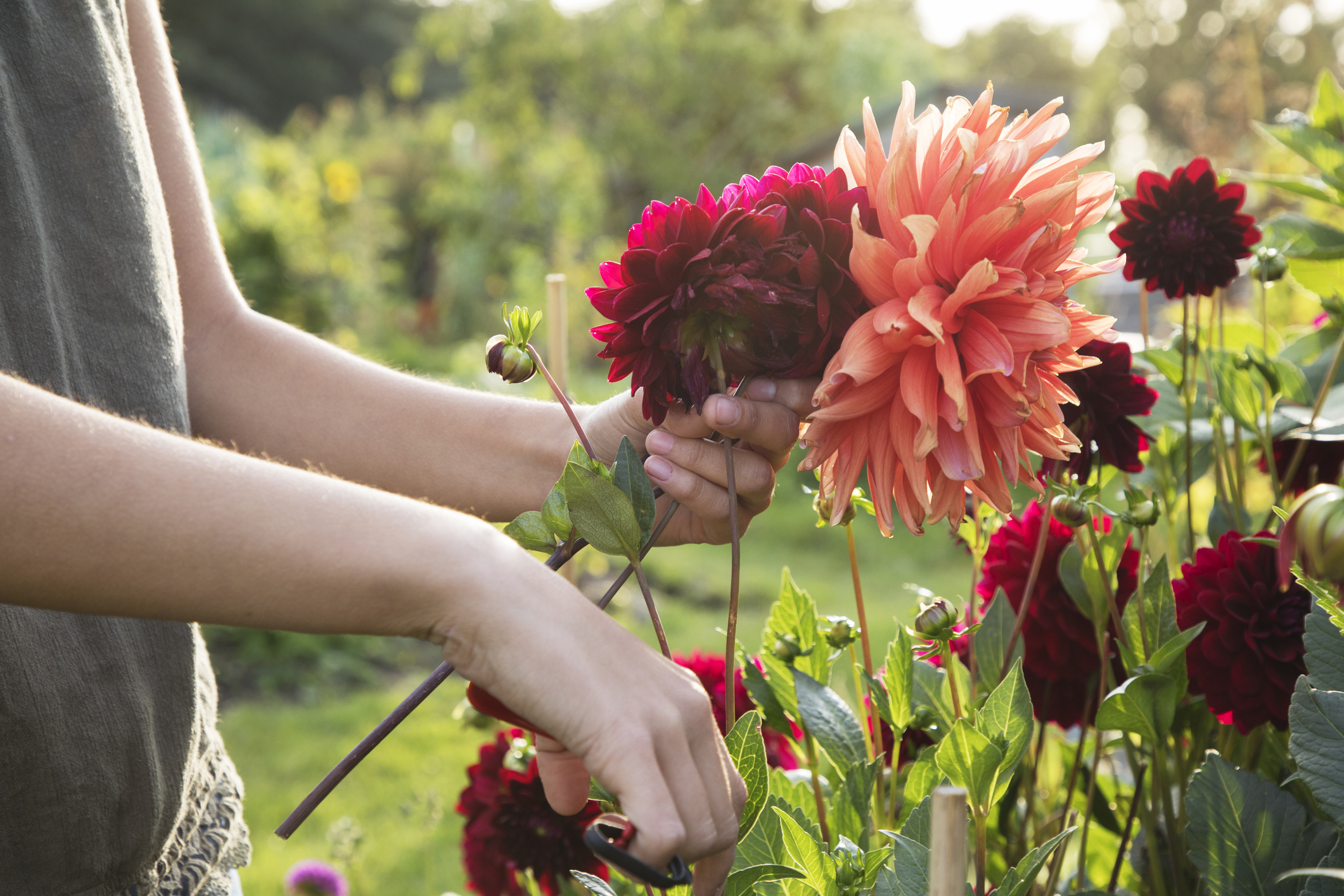The small suburban garden: 'It’s not what you’ve got, it’s what you do with it'
If you know where to look, a tiny suburban garden can yield as much pleasure as views across open countryside, believes Jonathan Notley.


In 1790, French aristocrat Xavier de Maistre was placed under house arrest for 42 days and used the time to embark upon a journey around his living room. His book, A Journey Around My Room, set out to prove that sitting on the living-room sofa can be as exciting as climbing Everest or sailing to Antarctica.
Pull up a deckchair, follow in de Maistre’s footsteps and take a trip around my suburban garden. This unexplored ‘piece of a continent’ measures only 9yd by 6yd, but is teeming with life and activity. As John Donne might have remarked, no garden is an island and this one — when adjoined to the other rectangular strips of garden in the street — could form part of a small park.
George Orwell’s Coming Up For Air, featuring 1930s Ealing, describes a suburban scene of garden after garden of privet hedges and lawns. In garden terms, it hasn’t changed much around here since then, except that some of the grass lawns have been replaced with plastic alternatives or wooden decking and some of the front gardens have given way to concrete car-parking spaces.
My garden in North Acton is south-facing. It’s surrounded on all four sides with brick walls of some kind, including those of the shed and, of course, the house, supplemented by wooden panels and trellises. This does mean that some animals can’t easily visit — I haven’t spotted any deer or hedgehogs, for example. Unfortunately, a rat found a gap and, when challenged, made its escape up a wisteria trunk angled at 80 degrees, up and over the wall into the next garden.
In the ‘outback’, the alleyway behind my shed, there is an elder, a conifer, a plum and a pear tree. It’s a kind of nature reserve that is seldom visited, operating as a hidden highway for foxes and squirrels. Under the conifer, very little grows, as the tree blocks out most of the light, but either side there are brambles, nettles and a host of other wild plants. I’m sure this is why I see butterflies such as red admirals flutter over the shed and then back again, when they discover that the main garden isn’t to their liking.
On the lower west side, there is a low-level seat made out of wooden decking planks. As the wood became rotten, ferns established themselves in the gaps. The sun never reaches that corner at ground level because the shed blocks it, but the bracken thrives there. That’s why it never pays to be too fastidious about weeding — some wild plants simply appear, their seeds or spores having been blown in on the wind. Forget-me-not, yellow poppies and purple toadflax have all put on a good display thanks to being spared by the trowel.
'The flowers are grouped together like tightly packed bunches of purple grapes and it operates like Heathrow Airport for bees'
Above ‘Fern Hill’, there is wisteria — the flowers are grouped together like tightly packed bunches of purple grapes and it operates like Heathrow Airport for bees. At any one time, there can be up to 30 of them buzzing in attendance and there is constant take-off and landing, which brings me naturally on to the birds.
Exquisite houses, the beauty of Nature, and how to get the most from your life, straight to your inbox.
I do a lot of bird-spotting with my ears, which is useful when the leaves are out on all the deciduous trees and birds find it easy to hide themselves in the foliage. I find words to try to help me remember the calls and songs of frequent visitors. For example, the wood pigeon’s call I would transcribe as coo-coo-coo, coo-coo repeated, with a short ‘coo’ added at the end to indicate when it is finished. Perhaps that’s only my pigeon English. The goldfinch’s whit-o-whit undulating call matches its undulating flight and the great tit comes off with a memorable teacher-teacher or sometimes pink-pink.
The resident wood pigeons have a penchant for apple and elder blossom and I have to shoo them away from both trees, otherwise they won’t bear much fruit. The great tits and blue tits, on the other hand, perform a good service in removing aphids from my apple tree, which is handy as my garden is pesticide free. This does mean that I have to share my apples with the occasional larva, but, as long as you aren’t squeamish and carefully cut them out, the apples are fine.
Although hardly Clarkson’s Farm, there are a few more edibles in my garden. Mint has spread all the way down the raised flower-bed on the east side, as far as the rosemary bush. On the other side, a pumpkin is trying its luck and I now have a strawberry patch. Last year, my single strawberry plant in the new flowerbed sent out runners and I buried them. They have taken root and I now have three daughter plants from the one parent, but, sadly, none of the daughters seem to be flowering this year.
No mini-break would be complete without a look at the local architecture. The shed has a sandy brick façade and, with its double-glazed window, looks like a small house. Next to it is a magnificent brick-built barbecue, complete with a spit-roasting pit and a roof with a chimney. Next to that is a mini stone water feature with cherubs. I’m sure they’ll all make it into a future edition of Pevsner.
Turning skywards can be a treat. There’s a constant stream of aircraft in the distance, making their way silently (from here) along the M4 corridor towards Heathrow. Police and VIP helicopters come and go and, on official occasions, the Red Arrows swoop west from central London. On a clear, dark night, you can see the universe. Admittedly, there is a bit of city glare, so it’s best to stick to looking at the solar system. With even a basic telescope, you can see the craters on the moon, the rings of Saturn, the moons of Jupiter and its cloud bands, the red planet and the phases of Venus.
Coming back down to earth, you are sure to spot a butterfly — the most reliable visitor is the holly blue. It has beautiful, light silver-blue underwings, which are marked with small, black spots, lacking the surrounding white circle found in other blues. It is always dancing around the bay tree. A new arrival this year is the speckled wood, which I have seen soaking up the sunshine with its wings opened wide on one of my brown wooden chairs. It is quite distinctive and is the only butterfly in Britain to have a pattern of cream patches on a dark-brown background.
The whoosh of traffic along the nearby arterial road, muted or amplified depending on the wind direction, and the warning horn of a passenger train echoing through the neighbourhood call us back to the world outside the garden.

The year of the umbellifer: the glorious plant jesters thriving in the summer rain
Perhaps a bit prickly, these plants are loved by bumblebees and make a great splash of colour.

The case of the disappearing dahlias
John Hoyland of the gardens at Glyndebourne on how to plug the gaps of those flowers that didn't make it
Country Life is unlike any other magazine: the only glossy weekly on the newsstand and the only magazine that has been guest-edited by His Majesty The King not once, but twice. It is a celebration of modern rural life and all its diverse joys and pleasures — that was first published in Queen Victoria's Diamond Jubilee year. Our eclectic mixture of witty and informative content — from the most up-to-date property news and commentary and a coveted glimpse inside some of the UK's best houses and gardens, to gardening, the arts and interior design, written by experts in their field — still cannot be found in print or online, anywhere else.
-
 What trees taught me about perfect planting — Alan Titchmarsh
What trees taught me about perfect planting — Alan TitchmarshSense and patience is key to growing healthy trees, as a certain Mr Mackenzie showed a young Alan Titchmarsh
-
 What on earth is the person who comes up with Annabel's otherworldly facade displays on? London's most magical Christmas shop displays
What on earth is the person who comes up with Annabel's otherworldly facade displays on? London's most magical Christmas shop displaysPhotographs by Greg Funnell.
